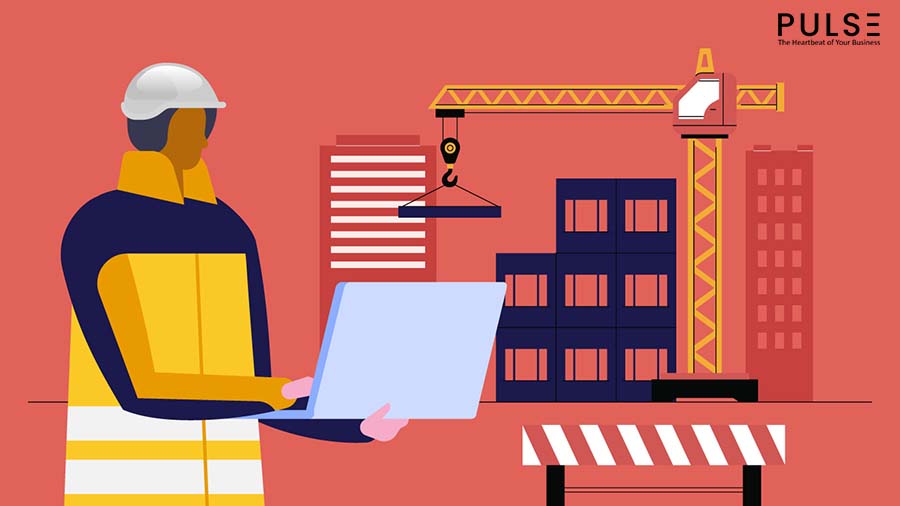The number of unfortunate and fatal events in construction sites is continuously on the rise. Therefore, to safeguard against life-threatening hazards, employers must aim to establish health and safety compliance in the construction sites governed by strict regulations.
This includes informing workers about construction site safety and conducting regular safety training sessions. Understanding the fundamentals of construction site safety can go a long way in keeping everyone productive and injury-free.
What Is a Construction Site, and How Safety Compliance Works Here?
Any plot of ground where a structure is being built or renovated is considered a construction site. Thus, buildings and industrial construction sites are two of the most common types of these locales. A new home or hotel, for example, belongs in the building category, whereas the construction of a new railroad or tunnel belongs in the industrial category.
The complexity and safety aspects of construction projects differ which means safety compliance will differ from site to site. Engineers and managers make measures to protect the safety of their personnel after analyzing the potential dangers and risks associated with a specific construction site.
Common Hazards on Construction Sites that Needs Safety Compliance
Some of the common risks and hazards associated with working on construction sites include:
- Falls from working at a high altitude
- Being struck by moving objects
- Slips, trips, and falls
- Electrical hazards
- Hand-arm vibration syndrome
- Exposure to airborne fibers and materials
Construction safety has improved dramatically over the last decade, but there are still a significant number of fatalities in the industry that are common.
According to OSHA, the construction industry accounts for 20% of all work-related injuries.
Best Practices to Improve Safety Compliance on Construction Sites

Below are a few ways you can put health and safety into everything you do at the construction site:
1. Say Yes to Protective Gear at all times
One way to ensure safety at construction sites is to provide each of the construction workers on the site with the essential PPE gear. These include hard helmets, safety glasses, high visibility vests, gloves, anti-slip footwear, and other equipment such as shields and hearing aids varying per the industry’s needs.
2. Make Inductions Mandatory
It is common to overlook the need for induction before starting work safety since it can be time-consuming. However, this reluctance towards running safety inductions drives companies towards vulnerabilities, breaches, and hefty fines.
Conducting an induction meeting before starting work reminds workers of the unique hazards at the construction site and gives them direction on what to do and what to avoid.
3. Conduct Regular Training Sessions for Team
One of the most critical components in enhancing safety compliance in the workplace is a strong, thorough, and regular training program. Ensure the training program thoroughly covers the dangers, safety precautions, and rules that apply to the tasks workers perform. Re-testing workers’ understanding of safety and risk is also essential to ensure that the workers are prepared and ready to begin working safely.
4. Strong Supervision
Safety managers should foster a safety culture by setting clear protocols, schooling workers about guidelines, keeping tabs on all keep workers, and disciplining those who do not adhere to proper construction site safety regulations.
5. Manage Stress by enforcing Regular Breaks
The building site is exposed to a stressful environment, to the point where even seasoned workers tend to show signs of fatigue. It can increase the likelihood of accidents, and thereby it is essential to look at creative ways to reduce the strain.
One of the ways this can be done is by encouraging employees to take regular breaks to take rest, unwind, and “get some fuel” before continuing to work.
6. Keeping an Eye on Faulty Equipments
There are huge risks associated with even minor malfunctioning machinery on the construction sites. Therefore, it is important to address the concern and create awareness to minimize the risks as much as possible.
Whether it’s a faulty ladder or a drill, it is better to replace it or fix it to avoid mishaps in the future. Safety managers should ensure that all the equipment used is in its best state. Workers, on the other hand, should also visually inspect the equipment before starting.
Improve Your Construction Safety Culture With Pulse
Pulse is an all-inclusive safety compliance software for construction companies to protect workers and improve overall safety and productivity.
Pulse helps you ramp up your safety by digitizing every move from site auditing to taking action. Therefore, the software is built to devote significant technological resources to transition to a safe and productive construction site smoothly.
Whether it’s about automating your workflows, completing the forms, monitoring the construction site, or even preparing practical checklists, Pulse can be your go-to scalable solution. Empower your team with Pulse’s no-obligation 14-day trial to build a safe Construction Site environment.
